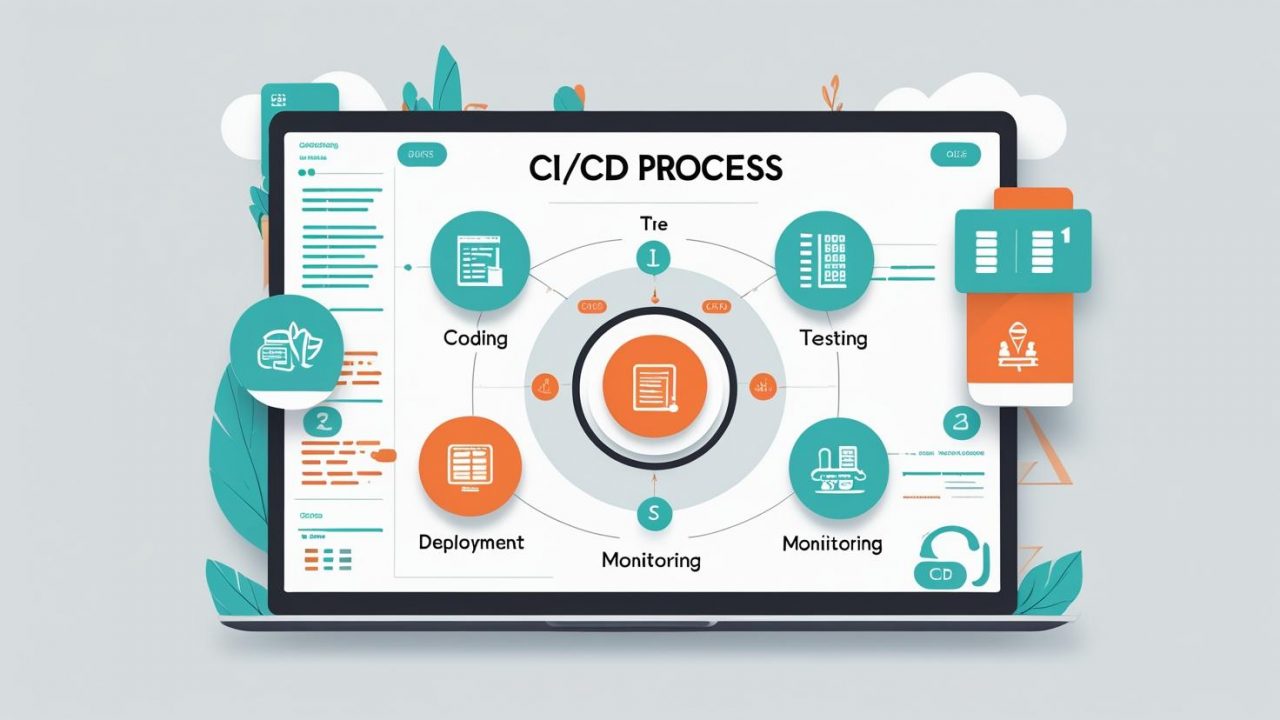What is the CI/CD Process in Software Development?
In modern software development, speed, quality, and reliability are critical. The CI/CD process—short for Continuous Integration and Continuous Deployment (or Delivery)—helps teams meet these demands through automation. It’s a methodology that ensures code is integrated, tested, and deployed efficiently and consistently. But what exactly is the CI/CD process, and how does a platform like OpsNexa make it better?
The CI/CD process automates the software release cycle by enabling frequent code changes to be automatically built, tested, and deployed to production. This approach minimizes manual intervention, reduces bugs, and accelerates delivery time. Whether you’re a startup or an enterprise team, understanding and implementing CI/CD with tools like OpsNexa is a game-changer.
Understanding the CI/CD Process: A Breakdown
The CI/CD process is typically divided into two main stages:
-
Continuous Integration (CI)
-
Continuous Deployment/Delivery (CD)
Continuous Integration (CI)
CI focuses on merging all developer working copies to a shared mainline several times a day. Every time a developer commits code, an automated build and test process runs to verify the changes. This ensures that issues are caught early and the codebase remains stable.
Core steps in CI:
-
Code commit to a version control system (like GitHub)
-
Automated build triggered by the commit
-
Automated unit and integration testing
-
Static code analysis and validation
Continuous Deployment/Delivery (CD)
CD automates the release of validated code to production or staging environments. In Continuous Delivery, deployments require manual approval. In Continuous Deployment, every change that passes tests is automatically released to users.
Core steps in CD:
-
Deploy build artifacts to staging or production
-
Perform additional automated tests (e.g., end-to-end, security scans)
-
Notify teams or users of successful releases
-
Monitor system performance and rollback if needed
With OpsNexa, these steps are orchestrated seamlessly, reducing friction between development and operations teams while ensuring speed and quality.
Why CI/CD Matters in Software Development
The CI/CD process addresses many challenges in traditional software development. Without it, teams often face delayed releases, difficult integrations, and inconsistent environments.
Key benefits of CI/CD include:
-
Faster Time-to-Market: Automated testing and deployment reduce wait times between development and release.
-
Improved Code Quality: Frequent testing helps detect bugs earlier in the lifecycle.
-
Reduced Human Error: Automation limits the risks introduced by manual steps.
-
Stronger Collaboration: Teams work in harmony with shared tools, clear feedback, and real-time visibility.
Real-World Example:
Without CI/CD, releasing a new feature may take days or weeks, including manual testing, documentation, and deployment coordination. With CI/CD (and tools like OpsNexa), the same process can take minutes—fully automated from commit to release.
How OpsNexa Enhances the CI/CD Process
OpsNexa is a modern DevOps automation platform designed to simplify and enhance the CI/CD process. It integrates seamlessly with popular tools like GitHub, GitLab, Jenkins, Docker, and Kubernetes, allowing development teams to automate the entire software delivery pipeline.
Here’s how OpsNexa supports CI/CD:
-
Pipeline Automation: Define custom pipelines for building, testing, and deploying applications with drag-and-drop simplicity or YAML configuration.
-
Real-Time Monitoring: Get instant insights into build status, test results, and deployment progress.
-
Error Detection: Identify pipeline failures, code vulnerabilities, and environment inconsistencies early.
-
Multi-Environment Support: Deploy across dev, staging, and production with version control and rollback features.
-
Role-Based Access Control: Ensure secure collaboration with permissions and audit trails.
By using OpsNexa, businesses streamline CI/CD processes, reduce costs, and improve reliability across their software lifecycle.
Step-by-Step Example: CI/CD Workflow with OpsNexa
To better understand the CI/CD process, let’s walk through a typical workflow using GitHub and OpsNexa.
Step 1: Code Commit
A developer commits code to a GitHub repository. This triggers a webhook to notify OpsNexa of the change.
Step 2: Automated Build
OpsNexa pulls the latest commit and builds the application using predefined environments (e.g., Node.js, Python, Java).
Step 3: Automated Testing
Unit tests, integration tests, and static code analysis are run automatically. If tests fail, developers are notified with logs.
Step 4: Artifact Storage
If successful, the application artifact (e.g., Docker image) is saved in a container registry or package repository.
Step 5: Deployment
OpsNexa deploys the build to a staging or production environment. CD can be manual or fully automated, depending on your setup.
Step 6: Monitoring and Feedback
Once deployed, OpsNexa tracks system metrics and errors. If a failure occurs, automated rollback is triggered, ensuring minimal disruption.
This cycle repeats continuously, ensuring your software is always production-ready.
Final Thoughts: Future-Proofing with CI/CD and OpsNexa
The CI/CD process is no longer optional—it’s essential. As software delivery becomes more complex and user expectations rise, development teams need robust automation to stay competitive. CI/CD helps by reducing cycle time, increasing code quality, and enabling faster innovation.
OpsNexa takes this to the next level by offering an all-in-one platform that integrates seamlessly with your existing tools, simplifies pipeline management, and ensures every release is smooth, safe, and scalable.
Whether you’re:
-
Starting from scratch with CI/CD
-
Looking to optimize existing pipelines
-
Managing multiple deployment environments
…OpsNexa is your partner in delivering modern, agile, and efficient software at scale.
You can also Contact OpsNexa for Devops architect and devops hiring solutions.



